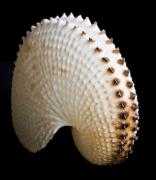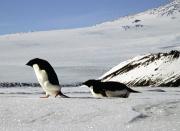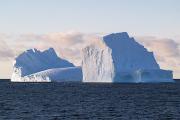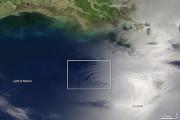Radio Program
Our regular Science and the SeaTM radio program presents marine science topics in an engaging two-minute story format. Our script writers gather ideas for the radio program from the University of Texas Marine Science Institute's researchers and from our very popular college class, Introduction to Oceanography, which we teach to hundreds of non-science majors at The University of Texas at Austin every year. Our radio programs are distributed at to commercial and public radio stations across the country.
When it’s time for most female octopuses to lay their eggs, they seek out a cave or other protected space. But not the argonaut. This tiny octopus makes her own protected space — a paper-thin shell. Mom and the eggs float through the open ocean inside the shell until the eggs hatch and the little ones go their own way.
Researchers don’t usually summarize their findings with a nifty little rhyme. But a recent paper by scientists from Greece and the U.K. did. “Columns and pavements in the sea, not always antiquities will be,” the researchers wrote.
Many whales look sleek and powerful — they glide through the oceans quickly and gracefully. But not the bowhead. It has a thick body, there’s no fin on its back, and it has a giant mouth — bigger than any other animal on the planet.
The adult bowhead is up to about 50 feet long, and weighs anywhere from 60 to a hundred tons. Marine biologists say the whale can live for more than a century — and perhaps up to two centuries.
So many penguins, so little time. That was the dilemma facing Penguin Lifelines, a project at the University of Oxford. Scientists installed 50 cameras in Antarctica and the Southern Ocean to watch colonies of penguins. The observations would provide new details on penguin behavior, and on penguins’ response to the changing climate.
Over the last few decades, people have used all kinds of junk to create artificial reefs — from old tires and concrete blocks to a 30,000-ton aircraft carrier. One of the most intriguing reefs, though, isn’t made from leftovers. Instead, it’s an art museum — a collection of about 500 sculptures off the coast of Cancún.
The Underwater Museum of Art began in 2009. One of its goals was to help preserve a natural reef nearby — the second-largest in the world — by pulling in some of the hundreds of thousands of people who visit the area each year.
For much of the summer, sand tiger sharks gather in and around Delaware Bay. But when summer’s over, it’s like an extended family at the end of a long reunion — everybody heads their own way.
Giant icebergs in the Southern Ocean appear to be leaving much more than melted ice in their wakes. They’re providing a bounty of nutrients that feed “blooms” of microscopic organisms. And those organisms could help slow the rise in Earth’s temperature.
An iceberg forms when a glacier pushes out to sea and part of it breaks off. The bottom of the iceberg holds bits of nutrient-rich rock and dirt gouged out as the glacier scraped across land.
Tuna, sailfish, marlin, and many other large marine fish feature long, tapered bodies that glide through the ocean with ease. And then there’s Mola mola, the ocean sunfish — the heaviest of all bony fish. It looks like a giant head with fins at the top and bottom.
Marine biologists have identified four species of ocean sunfish, which inhabit warm and temperate waters around the world. Mola mola is the largest. A typical adult is about six feet long and weighs a ton. And the largest single Mola mola tipped the scales at more than 5,000 pounds.
For some tiny organisms that live near the surface of the oceans, a big oil spill is a disaster. But a slow seepage of oil from below can be like a free lunch.
Seeps occur along the transition zone between land and the deep ocean. There’s a thinner layer of rock above reservoirs of oil and natural gas, so the hydrocarbons bubble up through the cracks in the ocean floor and float to the surface.
If you really want to get away from it all, you might try the Challenger Deep — the deepest point in all the world’s oceans. This trench in the western Pacific Ocean bottoms out at about seven miles — deep enough to drop in Mount Everest with more than a mile to spare.
Even this dark, remote world isn’t completely quiet, though. In fact, some recent research found that it’s quite noisy. From the call of a whale...to the whine of the propellers of a passing ship...to the rumble of a nearby earthquake...it’s never really silent.











